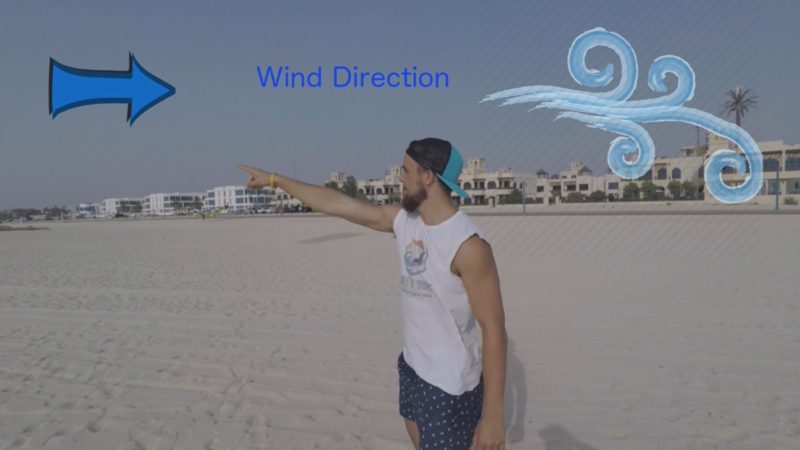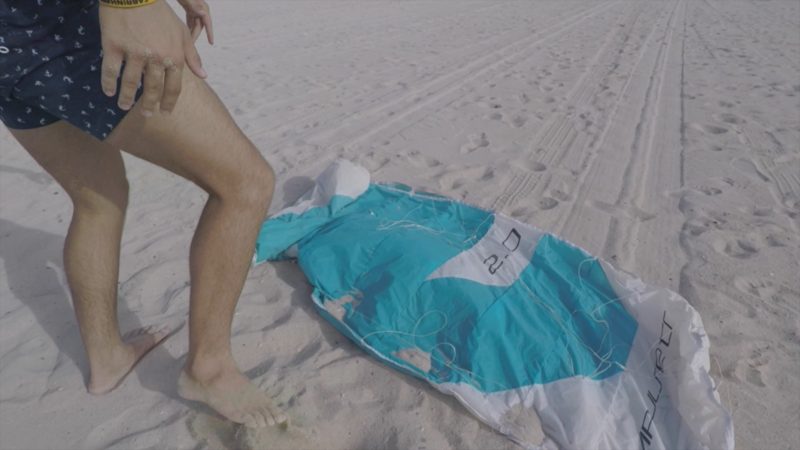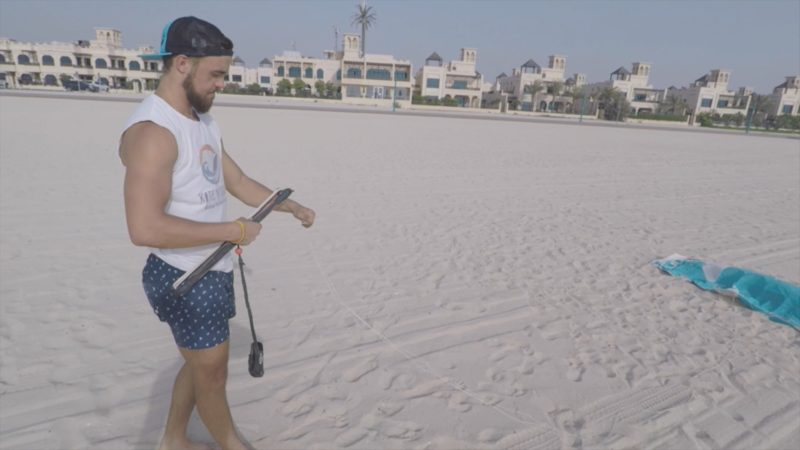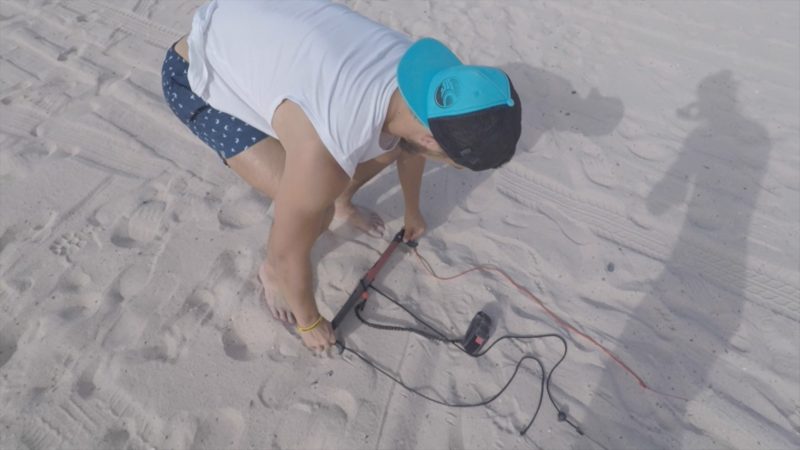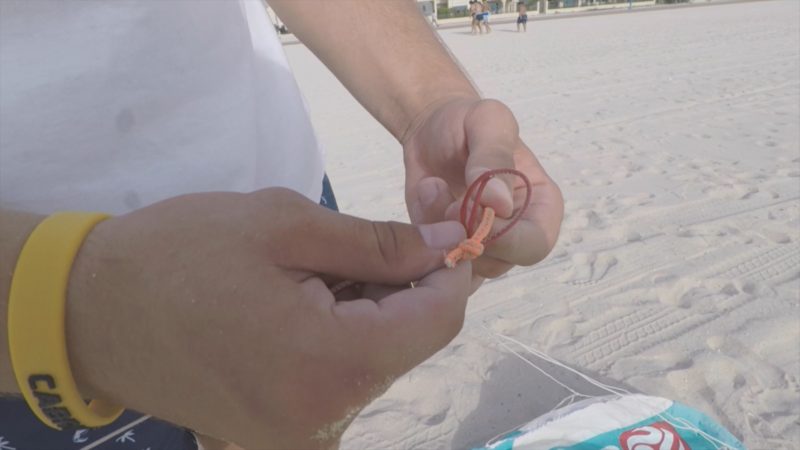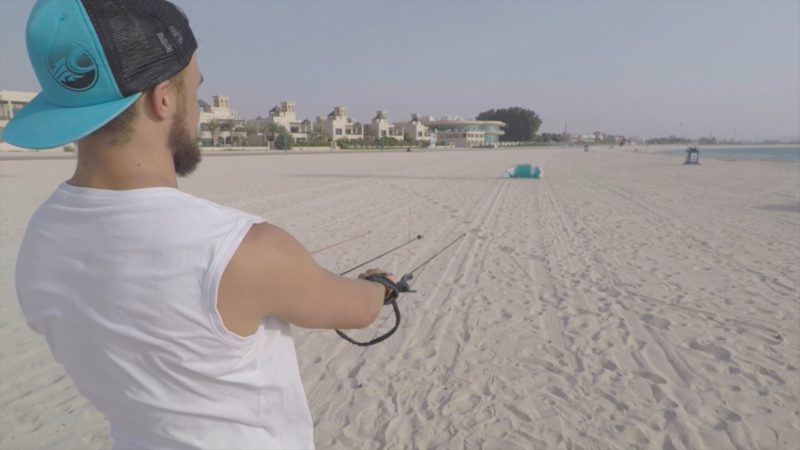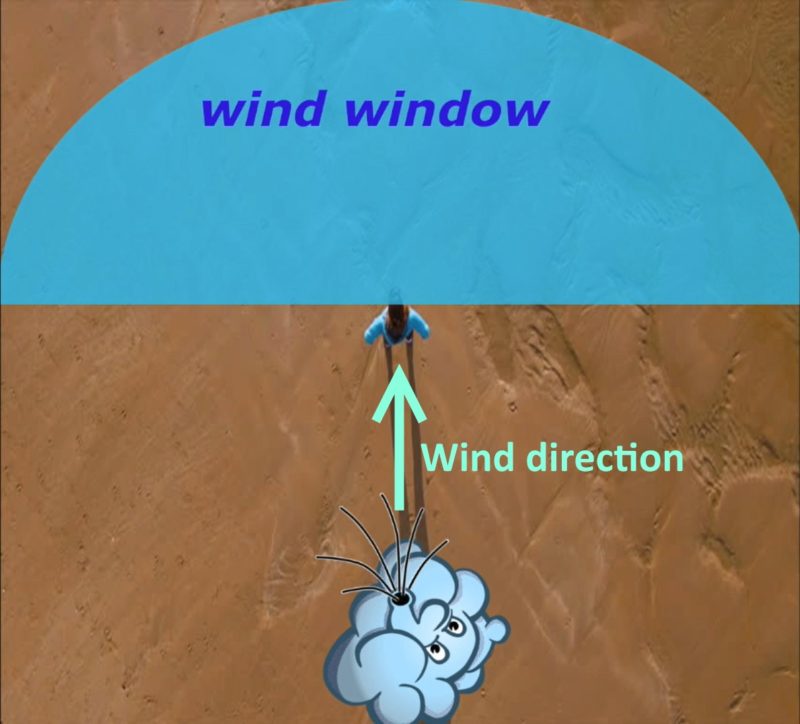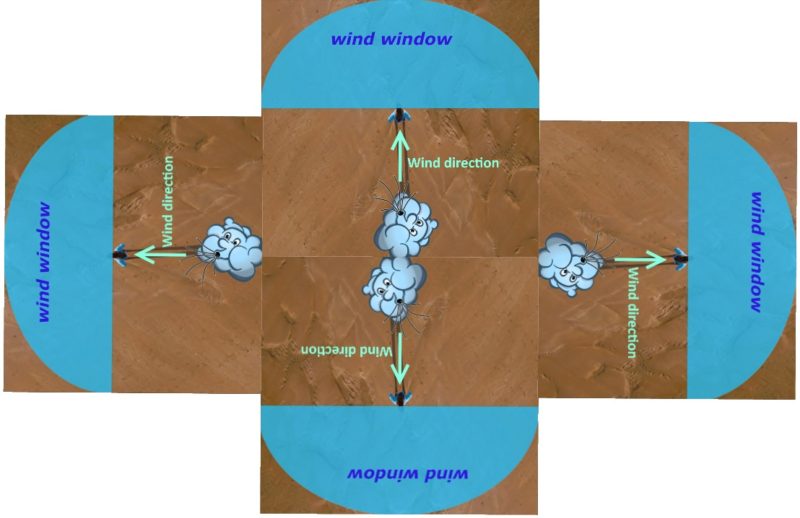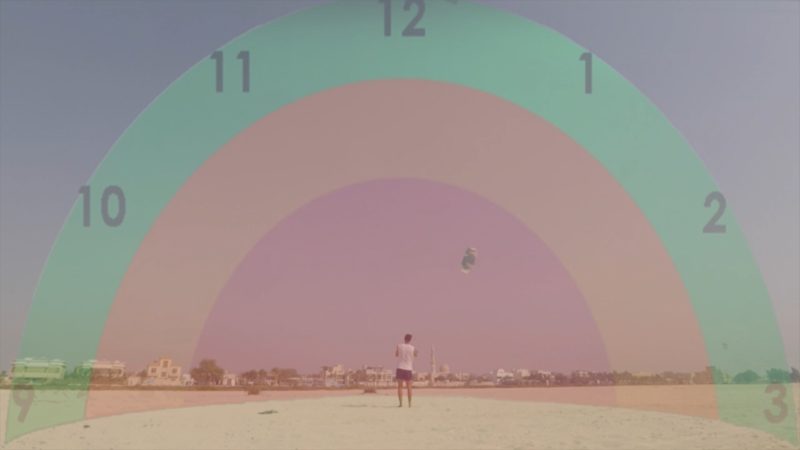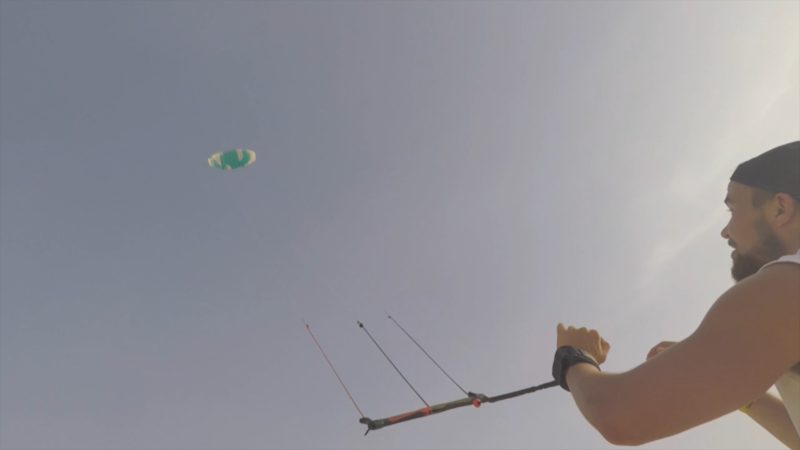Trainer kite control and wind window
This tutorial will explain in details kite surfing basics on how to fly a trainer kite and the power generated by the kite in relation to its position in the wind window
Note: Use these videos and tutorials as a way to review your learning or possibly a refresher. We do not recommend you try any of these on your own, it is best to learn from a trained professional. Kitesurfing is an extreme sport that requires extensive safety training. If practiced under the wrong conditions, may lead to serious injuries or death.
- Set-up
- Basic of launch
- Wind window and power Zone
- Kite flying drills
- Safety systems
Wind direction

Upwind and downwind are terms used to refer to the direction of the wind. Upwind meaning against the direction of the wind and downwind with the direction. The term can also be used to describe the relative position of object or people to each other.
Up wind and down wind are even called Windward (upwind) and Leeward (downwind) with reference to a point or an object based on wind direction.
Upwind and Downwind (Windward and Leeward)
Always remember to notice hazard in your kitesurfing area such as other riders’ trees and so on. This is one of the most important things that you will learn during your kite surfing lessons as becoming a kite surfer requires that you are very well oriented and able to recognize the hazards around you based on the wind direction.
Basically the most important factor in kite surfing is the wind direction as practically everything you will do while kite surfing will depend on many factors but the most important one the wind direction.
Set-up and basic launch
Find a flat and open area that is free of any potential hazards or wind blocks determine which way the wind is blowing. Unroll a kite downwind placing sand on the upwind side as you do.
Once secured, check that the bridles are not tangled. Grab the bar and unroll the lines heading upwind of the kite NOTE this only applies to trainer kite and light wind.
As launching the kite downwind of the kite surfer in strong wind will generate big amount of power that can’t be very dangerous.
Trainer kite lines setup
Place the bar with red on your left this point is very confusing for most of the beginners and we have noticed this confusion all the time during our kite surfing lessons and this part it has been explained in details in our kite surfing tutorial: kite setup
kite Bar position
Once the bar has been placed on the ground then, walk in between the lines to separate them and connect the strings to the kite using the lark head knot.
kite surfing larkshead knot
Trainer kite basic launch
The trainer kite is launched downwind of the pilot again this is only suitable for small kite and light winds (in case of wind higher than 12 knots we don’t recommend the use of the training kite due to the fact this kite of kite can’t be depowered by sheeting out). Take hold of the bar and gradually fill the kite with air, when it’s ready, pull and the kite will launch.
Wind window and power zone
The wind window is the space in which the kite can fly; it is always on the downwind side of the pilot. This does mean that the wind window will of course change in relation to the direction of the wind.
We will use clock number to describe the angle of the kite. 9 o’clock and 3 represent the ground levels, and the twelve in the middle (Called even Zenith)
Kite surfing wind window
Wind window is relative to the wind direction and any change in the wind direction will have as a result a change of the wind window.
The space immediately downwind of the pilot is colored orange and then red these are the areas of higher power the further down the kite flies the stronger the pull.
if looked at from the side it should be common sense a kite sitting in green is almost parallel to the wind and won’t deflect much air a kite sitting in orange deflect a little more air and pulls harder, a kite sitting in red deflect a significant amount of air and pulls very hard (the red zone is called power zone)
Kite flying drills
At first attempt to just keep the kite near 12 o’clock in the green zone to keep it in the green steer gently and in very short periods if you need to steer right briefly pull in your right arm if you need to steer left briefly pull in your left arm always straighten both arms after steering to keep the kite under control it is an essential habit.
Once your control is better, move your kite 10:30. If you use small steering movement the kite should move slowly and stay in the green low power zone. Attempt to keep the parked 10:30 and then the same at 1;30 as this mimics the kites position during body dragging (controlling the kite inside the water without the board).
Next, try to keep the kite at 12 o’clock one-handed, hold the middle of the bar with one hand to steer, this will help later when you need a spare hand to carry the board. Once you keep the kite in the green and under control it’s time to experiment with the orange and red power zones.
Move the kite between eleven and one using small steering movements gradually start steering harder pull the left or right of the bar closer to your body to steer faster as the kite turns faster it will begin to reach the higher power zones.
This drill helps one to understand where the kite is most potent however, it is not something we generally use while kite surfing.
A power dive is a more useful drill as a louse control of the direction of the pull. A power dive can be done to the left or the right. A power dive to the left is where you start around 12 dive the kite to the left and then slowly return to the 12 to cut the power. It is the same concept on the right as well as the direction.
The strength of a power dive can also be controlled the more aggressively you steer the further towards the red the kite will drop and the more power it will produce. If the power is steering gently, it will provide little power. However, if you steer aggressively, it will generate much pull. Begins with gentle power dive and slowly slowly build up.
This is a handy drill as it’s a model of how you fly your kite, When starting to ride on the board, you should be able to do weak medium and robust dive easily without crashing the kite. Each time, steadily returning to 12 to cut the power.
Once you develop more confidence, you can chain several power dives together to generate more power,
Safety system
There is various safety system on training kites however they all work with a similar concept of pulling just one line and allowing the other line to slack meaning the kite flags out and drops on the ground with no power. You can use this land your kite or by bringing it slowly to three o’clock or nine o’clock and allowing a friend catch it.
Please keep in mind that kite surfing is an extreme sport and can’t be learned by watching videos online or reading blogs online. We highly advise that you have kite surfing lessons through a certified kite surfing school in Dubai.
If you are not sure on which kite surfing training course is more suitable for you or you are looking to buy kite boarding gear you can reach out to our team by phone/whatsApp +971558006363 or by email to [email protected]
See you on the water

